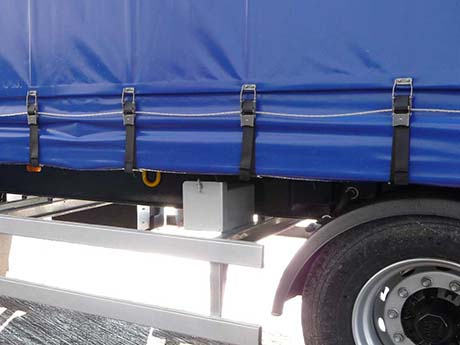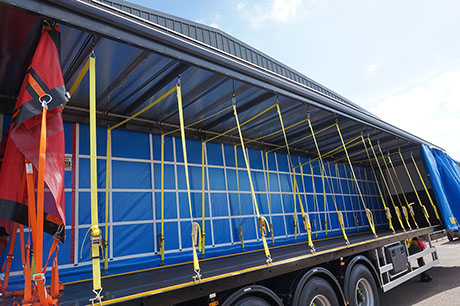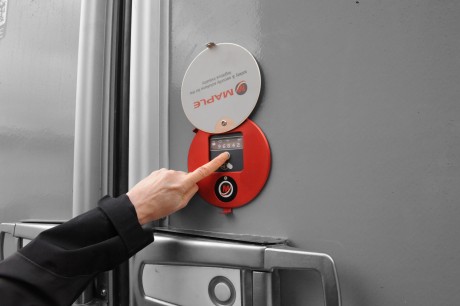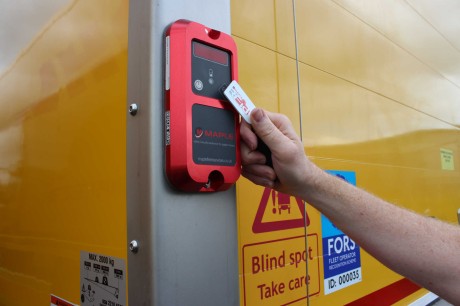Theft of Goods and Vehicles in Road Transport – The Risks and the Available Defences
Cargo and vehicle theft continues to be a serious issue for the UK road haulage industry. In 2023 alone, over 5,300 incidents of HGV and cargo crime were reported, with losses totalling around £68.3 million. That figure rose sharply in 2024, reaching over £111 million in stolen goods – an increase of nearly two-thirds year-on-year.
However, these headline numbers only tell part of the story. The total estimated cost of freight crime to the UK economy — once you factor in vehicle damage, insurance claims, missed deliveries, and investment in security infrastructure — was believed to be as high as £700 million in 2023 alone. Since 2020, the wider cost of freight crime is estimated to have exceeded £1 billion.
These figures underscore the scale of the problem and highlight the importance of taking a proactive, layered approach to vehicle and load security.
Common Tactics Used by Thieves
Most thefts occur when vehicles are parked up or left unattended — particularly in unsecured laybys, service areas, or depot yards. Some of the more common methods include:
- Curtain slashing – gaining quick access to goods near the trailer sides
- Rear door attacks – forced entry or lock tampering
- Roof cut-ins – targeting vulnerable top panels
- Seal tampering – attempting to hide unauthorised access
Physical and Electronic Security Measures
A wide range of systems is now used across the haulage industry to reduce the risk of theft. These can be fitted at the manufacturing stage or added retrospectively by fleet operators or third-party security specialists.
Curtain and Body Protection
- Anti-vandal curtains, featuring embedded steel mesh which helps resist cutting
- Roof wire security mesh, mounted just below the panel skin, makes rooftop entry more difficult
- PIR motion sensors within the load area can detect unauthorised presence when the doors are shut
Locking Systems and Seal Technology
- High-security mechanical locks offer improved resistance to tampering
- Electronic door locks (such as Maple's FreightLock, FreightLock IQ, and Integritas systems) offer access control via PIN pads, RFID or programmable authorisation
- Tamper-evident seals (e.g. SecureSeal) create an audit trail of each door opening and help to deter covert interference
Padlock Covers and Anti-Tamper Guards
- To counter bolt cutters and physical attack, many operators use hardened covers to shield padlocks and hasps
- Examples include the BDL padlock cover for barn doors and the TURTLE system for container-style closures
Bodywork Considerations: Curtainsiders vs Box Vans
Curtainsided trailers remain popular due to their flexibility for side loading and unloading, but their exposed soft-sided construction can leave them vulnerable to opportunistic slash-and-grab attacks.
For added protection, some operators instead opt for solid-sided box van bodywork, which offers a higher level of passive security. The rigid exterior reduces the likelihood of forced access without tools or prolonged effort. Some panel designs are specifically engineered for resilience — such as Don-Bur’s Blade panel, which provides strong resistance to both accidental and deliberate impact.
GPS Tracking and Telematics
Many fleets now deploy GPS tracking systems as standard, enabling:
- Real-time trailer or vehicle location
- Geofencing alerts when a unit moves outside a defined area
- Integration with door sensors or internal alarms
While remote immobilisation is occasionally used in van fleets or plant machinery, it’s not widely applied in HGVs due to safety, compliance, and operational concerns.
Camera Systems and Live Monitoring
Vehicle-mounted CCTV is increasingly being used to deter criminal activity, monitor access, and gather evidence following incidents.
Providers such as Fastview360 and The Vehicle Group supply multi-camera systems for commercial vehicles. These often include:
- 360° external and blind-spot coverage
- Internal load area monitoring
- Event-triggered recording (door opening, motion, or impact)
- Cloud-based access for fleet managers or insurers
- Live streaming and playback from desktop or mobile devices
A Layered Defence Strategy
There’s no single security measure that guarantees protection — which is why most operators adopt a layered approach that combines:
- Passive security through trailer construction and body design
- Physical deterrents like padlock covers and anti-vandal curtains
- Electronic access control and logging
- Telematics and location tracking
- Camera systems for visibility and post-incident review
- Staff training and procedural safeguards
Final Thoughts
The threat of freight theft isn’t going away — and while criminals continue to evolve their methods, so too must the industry’s response. Whether it’s through reinforced trailer structures, electronic security systems, live monitoring, or improved operational awareness, operators have a broad and growing toolkit of options at their disposal.
Regular reviews of current security measures, combined with investment in proven deterrents, can significantly reduce risk — protecting not just the cargo, but the continuity of service and the reputation of the business.
Sources
- Hansard. (2023). Written question on Freight Crime, December 2023. UK Parliament.
- Road Haulage Association. (2024). Freight crime spirals out of control as value of goods stolen rises to over £100 million.
- Fagan & Whalley. (2024). The Cost of Freight Crime.
- The Times. (2024). Truck drivers targeted by organised crime gangs.
We’d love to hear from you – get in touch today!






